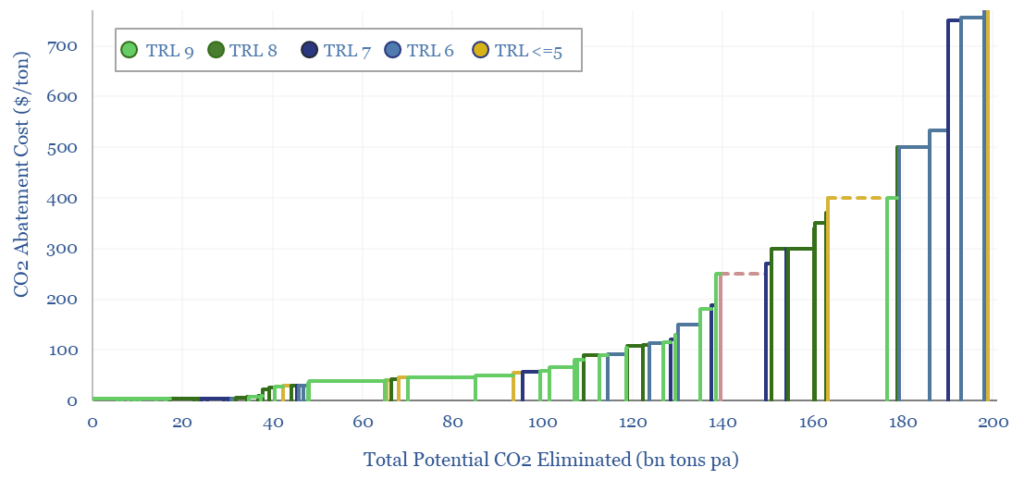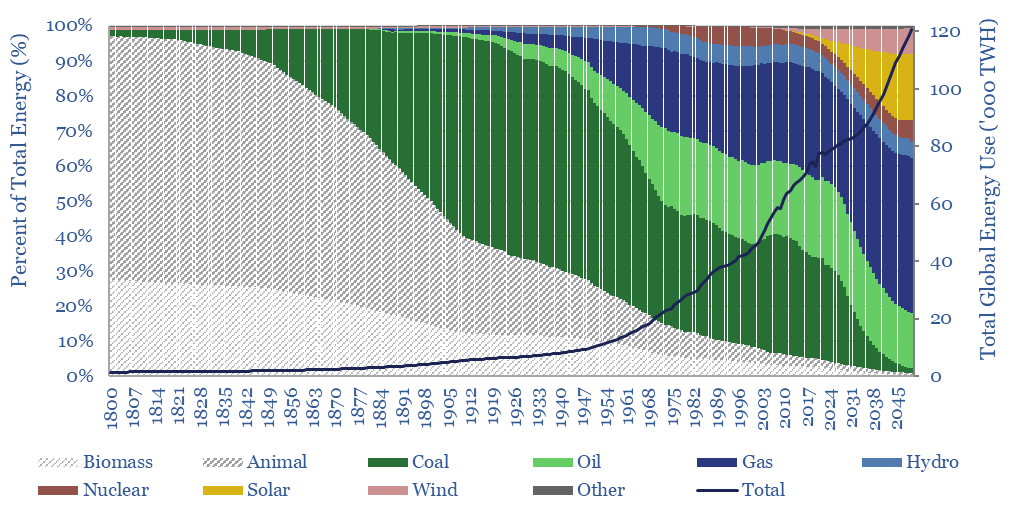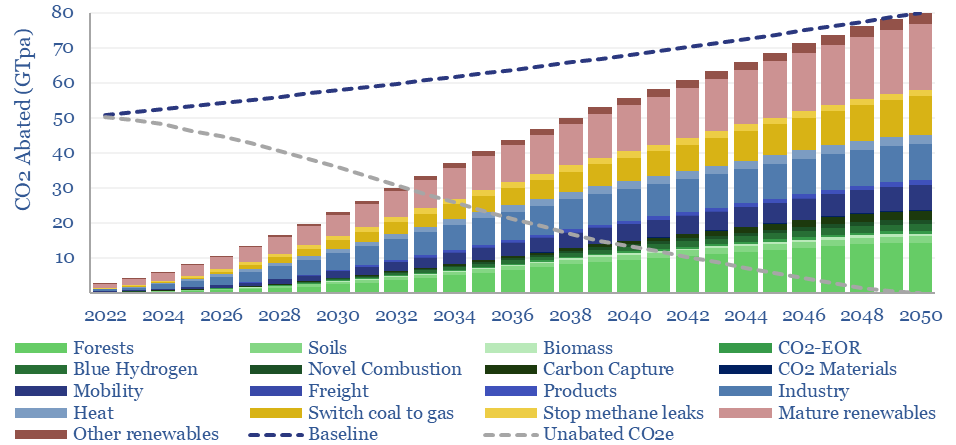What is the most likely route to net zero by 2050, decarbonizing a planet of 9.5bn people, 50% higher energy demand, and abating 80GTpa of potential CO2? Net zero is achievable. But only with pragmatism. This 20-page report summarizes the best opportunities, resultant energy mix, bottlenecks for 30 commodities, and changes to our views in 2023.
Thunder Said Energy’s research aims to help decision-makers find exciting opportunities to drive the energy transition; by mapping out hundreds of different technologies, which can satisfy the energy needs of the world – realistically, practically, cost-effectively – while taking out all of the net CO2 emissions.
This 20-page note is our best attempt to predict what will actually happen, if the world manages to reach net zero by 2050, while also achieving other important goals, providing better energy for 9.5 bn people, and ensuring relative geopolitical stability and security. It draws on 1,250 publications over the past five years, in our energy transition research.
Our baseline is that global CO2e emissions currently stand above 50GTpa, which would rise to 80GTpa by 2050 without climate action, and which gets reduced to net zero in our roadmap (explained on pages 2-3).
Our Roadmap to Net Zero chooses the best combination of options from our global database of over 100 decarbonization themes (cost curve below). The six main decarbonization drivers, and their contributions are explained on pages 5-6.

Five themes dictate which options are selected in our roadmap to net zero, and where we see the biggest opportunities: CO2 abatement costs (pages 6-7), technical readiness (page 8), resiliency (pages 9-10), resource bottlenecks (pages 11-12) and capital investment (page 13).

Full granularity on the route to net zero by 2050 is given on pages 14-20, including our 5-10 line outlook on each major theme that features in our roadmap. The underlying database is available for stress-testing.
Predictions and opportunities. The report is not an Academic or ideological document, but contains our predictions for what will actually happen: to the world’s energy mix, which markets will see the greatest upside, which commodities will see the biggest bottlenecks, and which themes should be watched most closely in 2024.

